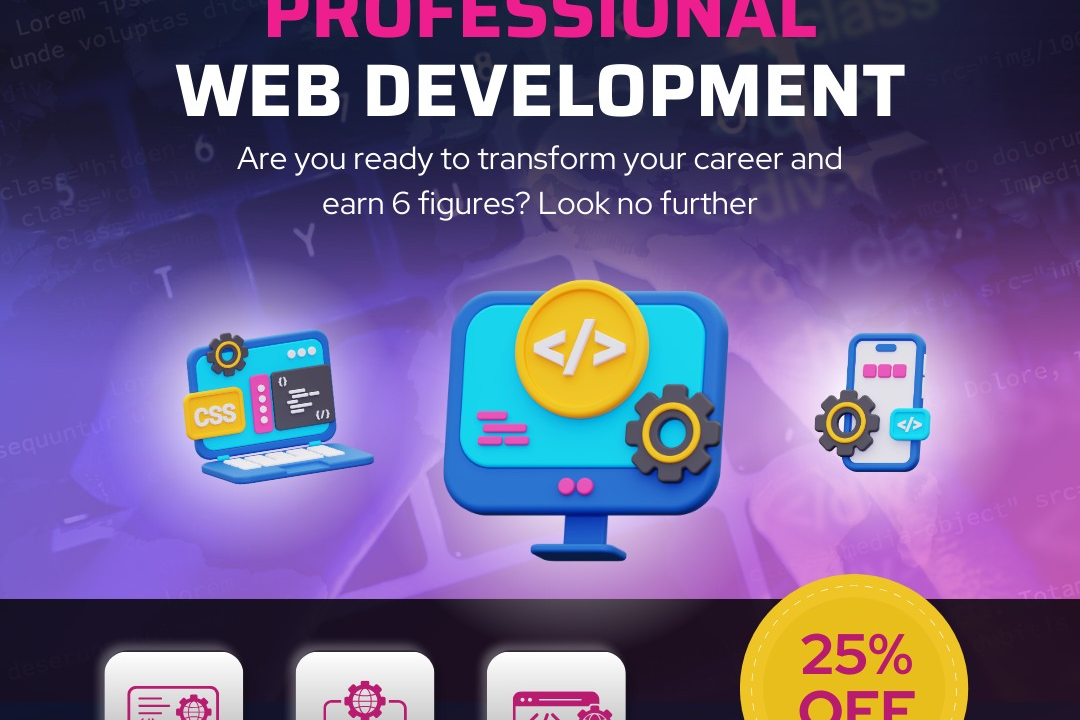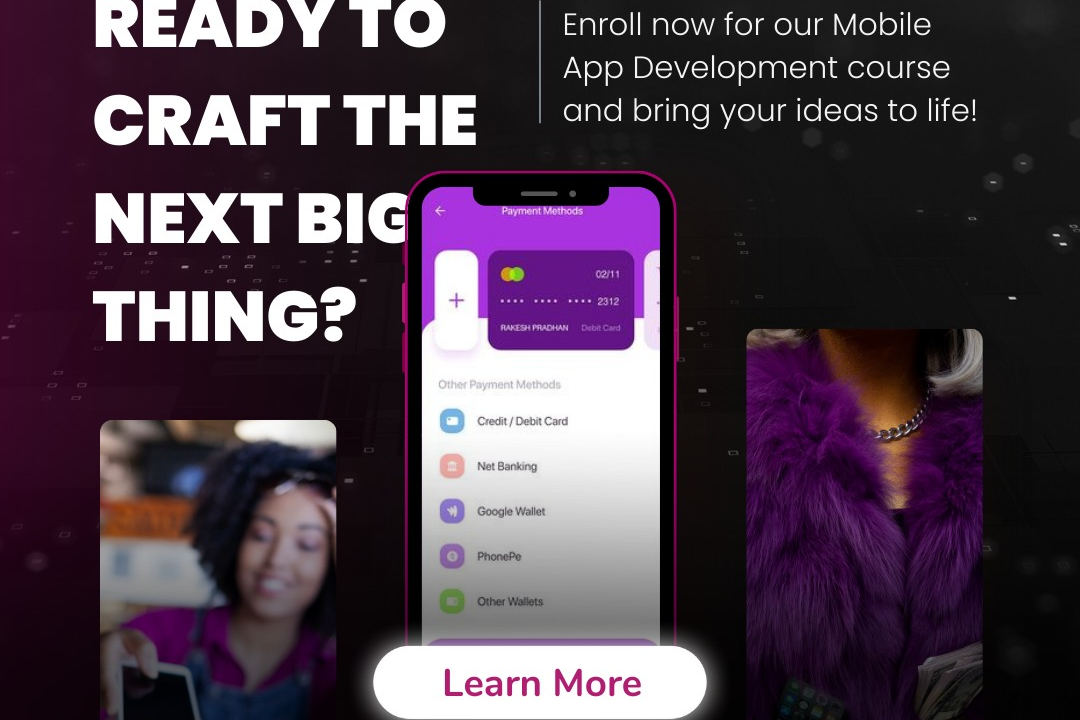Greatest Number Program in PHP
The Greatest Number program in PHP is a simple script designed to determine the largest among three
Greatest Number Program in PHP
The Greatest Number program in PHP is a fundamental coding exercise that helps beginners understand how to implement decision-making and comparison operators within a programming language. By learning to identify and output the largest of three numbers, students develop critical problem-solving skills and gain confidence in using conditional statements like if-else. This program serves as a building block for more complex algorithms and real-world applications where selecting maximum values is essential, making it a valuable foundational skill in programming and software development.
To Download Our Brochure: https://www.justacademy.co/download-brochure-for-free
Message us for more information: +91 9987184296
The Greatest Number program in PHP is a fundamental coding exercise that helps beginners understand how to implement decision making and comparison operators within a programming language. By learning to identify and output the largest of three numbers, students develop critical problem solving skills and gain confidence in using conditional statements like if else. This program serves as a building block for more complex algorithms and real world applications where selecting maximum values is essential, making it a valuable foundational skill in programming and software development.
Course Overview
The “Greatest Number Program in PHP” course teaches students how to identify and display the largest of three numbers using PHP's conditional statements. Through practical exercises and real-time projects, learners gain essential skills in PHP programming, decision-making, and problem-solving, enabling them to build foundational logic for more advanced development tasks.
Course Description
The “Greatest Number Program in PHP” course guides students to identify and display the largest of three numbers using PHP programming. Through step-by-step instructions and real-time projects, learners develop essential coding and decision-making skills in PHP, building a strong foundation for further development.
Key Features
1 - Comprehensive Tool Coverage: Provides hands-on training with a range of industry-standard testing tools, including Selenium, JIRA, LoadRunner, and TestRail.
2) Practical Exercises: Features real-world exercises and case studies to apply tools in various testing scenarios.
3) Interactive Learning: Includes interactive sessions with industry experts for personalized feedback and guidance.
4) Detailed Tutorials: Offers extensive tutorials and documentation on tool functionalities and best practices.
5) Advanced Techniques: Covers both fundamental and advanced techniques for using testing tools effectively.
6) Data Visualization: Integrates tools for visualizing test metrics and results, enhancing data interpretation and decision-making.
7) Tool Integration: Teaches how to integrate testing tools into the software development lifecycle for streamlined workflows.
8) Project-Based Learning: Focuses on project-based learning to build practical skills and create a portfolio of completed tasks.
9) Career Support: Provides resources and support for applying learned skills to real-world job scenarios, including resume building and interview preparation.
10) Up-to-Date Content: Ensures that course materials reflect the latest industry standards and tool updates.
Benefits of taking our course
Functional Tools
1 - PHP Development Environment: The course employs a robust PHP development environment, such as XAMPP, WAMP, or MAMP, which sets up a local server to run PHP scripts seamlessly on students’ computers. These environments bundle PHP, Apache, and MySQL, allowing learners to test their code in a simulated web server setup. Using these tools helps students familiarize themselves with real world web server configurations, ensuring they can deploy and troubleshoot PHP applications efficiently. The environment also provides an easy interface for editing code, managing databases, and monitoring server logs, making the learning process smoother. Setting up and configuring these environments form part of the hands on experience, emphasizing practical skills vital for professional web development roles.
2) Code Editors and IDEs: For writing PHP code, students are introduced to popular code editors like Visual Studio Code, Sublime Text, or PHPStorm. These editors come with syntax highlighting, code completion, error detection, and debugging features which enhance coding accuracy and efficiency. Familiarity with Integrated Development Environments (IDEs) like PHPStorm further empowers learners to write cleaner, more organized code with tools for refactoring, version control integration, and test running. The course emphasizes choosing the right tools based on project needs and personal preference, equipping students with the ability to streamline their development workflow and improve productivity.
3) Debugging Tools: Debugging is a critical skill in programming, and the course uses live debugging tools integrated into IDEs or standalone tools like Xdebug for PHP. These tools help students identify and resolve errors in their code efficiently. Features such as step through debugging, variable inspection, and breakpoint setting allow learners to understand code flow and pinpoint issues systematically. Mastering debugging tools ensures that students can troubleshoot their programs independently, reducing time spent on fixing errors and increasing confidence in handling complex logic issues in real time applications.
4) Version Control Software: The course introduces students to version control systems, primarily Git, using platforms such as GitHub or GitLab. These tools enable tracking changes in code over time, collaborating with peers, and managing different development branches. Students learn practical skills like cloning repositories, committing changes, resolving conflicts, and pushing updates. Understanding version control prepares learners for collaborative projects, code reviews, and maintaining clean project histories, which are indispensable in professional development environments.
5) Database Management Tools: Since the project may involve handling data, students are introduced to database management tools like phpMyAdmin or MySQL Workbench. These graphical interfaces facilitate creating databases, designing tables, and executing SQL queries. They help learners understand how PHP interacts with databases, what data persistence entails, and how to perform CRUD (Create, Read, Update, Delete) operations effectively. Familiarity with these tools is essential for developing data driven web applications and understanding backend data management.
6) Testing Frameworks: The course might incorporate testing tools such as PHPUnit, enabling students to write and execute unit tests for their PHP code. Testing frameworks help verify that each part of the program works as intended and assist in catching bugs early in the development process. Incorporating testing tools into the curriculum fosters good coding habits, ensuring code reliability and maintainability, which are crucial qualities in professional software development.
7) Collaboration Platforms: Tools like Slack, Microsoft Teams, or Discord are used to facilitate communication among students and instructors. These platforms provide channels for discussions, sharing resources, asking questions, and collaborative problem solving. Effective communication tools help create a community environment where learners support each other, clarifying doubts promptly and fostering teamwork skills necessary for working in agile development environments.
8) Documentation and Learning Resources: The course utilizes online documentation, tutorials, and API references to supplement practical training. Resources like the official PHP documentation, Stack Overflow, and developer blogs help deepen understanding, troubleshoot issues, and explore advanced topics. Access to well maintained learning materials encourages independent study, research skills, and continuous learning, empowering students to become proficient developers beyond the classroom.
9) Performance Profiling Tools: To optimize their code, students explore tools like Xdebug profiler or PHP CodeSniffer, which assist in analyzing performance bottlenecks and enforcing coding standards. These tools guide learners in writing efficient, clean, and maintainable code, essential for building scalable applications. Learning how to profile and refactor code ensures that students can deliver high performance solutions aligned with industry best practices.
10) Deployment Tools: The course may introduce basic deployment tools such as FTP clients (FileZilla) and web hosting platforms for deploying PHP projects live. Students learn the steps to upload their code onto servers, configure domains, and set up SSL certificates. Familiarity with deployment processes equips learners with the practical knowledge required to transition projects from local environments to production, preparing them for end to end web development.
11 - Security Testing Tools: As part of best practices, the course covers simple security testing tools or methodologies to identify vulnerabilities in PHP code, such as input validation or SQL injection risks. Using tools like OWASP ZAP or manual security checks instills awareness of building secure applications. Understanding security measures safeguards user data and enhances the credibility of developers, aligning their skills with industry security standards.
12) Learning Management Systems (LMS): The training program is often complemented with LMS platforms such as Moodle or Coursera, which host lectures, assignments, quizzes, and discussion forums. These platforms facilitate structured lessons, track progress, and provide resources for self paced learning. Leveraging LMS tools helps organize the training process systematically, ensuring comprehensive coverage of topics while providing flexibility for learners to revisit content as needed.
13) Online Code Sharing Platforms: Students are encouraged to use platforms like GitHub Gist or Pastebin to share snippets of code for peer review or instructor feedback. These tools promote transparency, collaborative learning, and effective code showcasing. Mastery of sharing and reviewing code publicly prepares learners for open source contribution practices and remote team collaborations.
14) Interactive Coding Platforms: Some courses incorporate online platforms like Codecademy, CodingRooms, or Replit, which allow students to write and test PHP code directly in the browser. These tools support interactive, real time practice and immediate feedback, making learning more engaging and accessible. Interactive platforms help reinforce understanding and facilitate experimentation without complex setup procedures.
15) Code Quality and Style Checkers: Tools like PHP CodeSniffer or PHP CS Fixer are introduced to promote consistent coding standards and practices. These tools automatically detect deviations from recommended style guidelines, enforcing readability and maintainability. Developing code consistency ensures collaborative efficiency and professional quality expectations in software projects.
16) Continuous Integration (CI) Tools: The course introduces students to CI tools such as Jenkins, Travis CI, or GitHub Actions. These platforms automate the process of testing, building, and deploying PHP applications whenever code changes occur. Familiarity with CI/CD pipelines helps students understand how to maintain code quality, reduce manual errors, and achieve faster deployment cycles in real world projects. Learning these practices prepares them for modern development workflows employed by leading tech companies.
17) Containerization and Virtualization Tools: To simulate production environments, the course may cover containerization tools like Docker. Students learn how to create containerized PHP environments, ensuring consistency across different development setups and simplifying deployment processes. This knowledge is vital for understanding scalable, portable, and isolated application deployments in cloud based infrastructures.
18) API Development and Testing Tools: The curriculum includes tools like Postman or Insomnia for designing, testing, and debugging RESTful APIs built with PHP. These tools help students validate their API endpoints, manage request headers, and analyze responses effectively. Mastery of API testing accelerates development of backend services that interact seamlessly with frontend applications, which is essential in full stack development.
19) Cloud Hosting Platforms: The course covers deploying PHP applications on cloud services such as AWS, Google Cloud, or Azure. Students learn how to provision virtual machines, configure web servers, and manage DNS settings to make their projects accessible globally. Gaining experience with cloud hosting broadens their understanding of scalable infrastructure, security, and cost management in a live environment.
20) Real Time Collaboration Tools: Tools like Google Drive, Dropbox, or OneDrive are used for sharing project files, presentations, and documentation among team members. These cloud storage solutions facilitate seamless collaboration, version control, and resource management, fostering teamwork skills essential for professional software development.
21 - Performance Monitoring Tools: The curriculum introduces tools such as New Relic or AppDynamics for monitoring application performance in production environments. These tools help students identify performance bottlenecks, track user activity, and optimize response times. Learning these skills ensures that web applications remain reliable, scalable, and efficient even under heavy load.
22) Security Scanning and Vulnerability Detection: Incorporating tools like Snyk or Burp Suite, the course educates students on scanning their PHP code and dependencies for vulnerabilities. Understanding how to identify and mitigate security risks prevents potential data breaches and aligns with industry security standards, making learners industry ready.
23) Data Visualization and Analytics Tools: The course may include integrating libraries like Chart.js or D3.js to visualize data within PHP based applications. This enhances the user experience by presenting complex data insights visually and interactively. Such skills are valuable for developing dashboards and reporting modules in enterprise applications.
24) Automated Deployment Scripts: The curriculum covers scripting tools like Bash or PowerShell to automate deployment workflows. Automating repetitive tasks such as backups, code updates, and server configurations helps students understand the importance of reliable release management, reducing downtime and errors during deployment cycles.
25) Feedback and Issue Tracking Tools: Platforms like Jira, Trello, or Asana are used for task management and bug tracking during project development. These tools structure workflows, prioritize features, and track progress, reflecting real world project management practices. Familiarity with such tools prepares students for effective team collaboration and agile development methodologies.
26) Learning Communities and Forums: Engaging with community platforms like Stack Overflow, Reddit, or PHP specific forums fosters peer support, knowledge sharing, and staying updated with the latest trends. Encouraging participation helps students build a professional network, troubleshoot issues independently, and contribute to open source projects in the future.
27) Code Review Platforms: Tools like Review Board or GitHub Pull Requests facilitate structured code reviews, enabling students to receive constructive feedback on their code quality. This process promotes best practices, enhances code readability, and develops critical evaluation skills necessary for professional software development.
28) Mobile Compatibility Testing Tools: Utilizing tools such as BrowserStack or Sauce Labs, students learn to test PHP web applications across various devices and browsers. Ensuring mobile responsiveness and cross platform compatibility is vital for reaching a broader audience and delivering quality user experiences.
29) Analytics Integration: Students explore integrating analytics platforms like Google Analytics into their PHP projects. This allows tracking user interactions, collecting usage data, and making informed improvements to applications, vital for product driven development.
30) Continual Learning Resources and Certification Platforms: Beyond technical tools, the course emphasizes utilizing platforms like Coursera, Udacity, or Pluralsight to stay current with PHP advancements and related technologies. This attitude toward lifelong learning ensures students remain competitive and innovative in their careers.
Browse our course links : https://www.justacademy.co/all-courses
To Join our FREE DEMO Session:
This information is sourced from JustAcademy
Contact Info:
Roshan Chaturvedi
Message us on Whatsapp: +91 9987184296
Email id: info@justacademy.co
A Program In Which Select Value In Php












